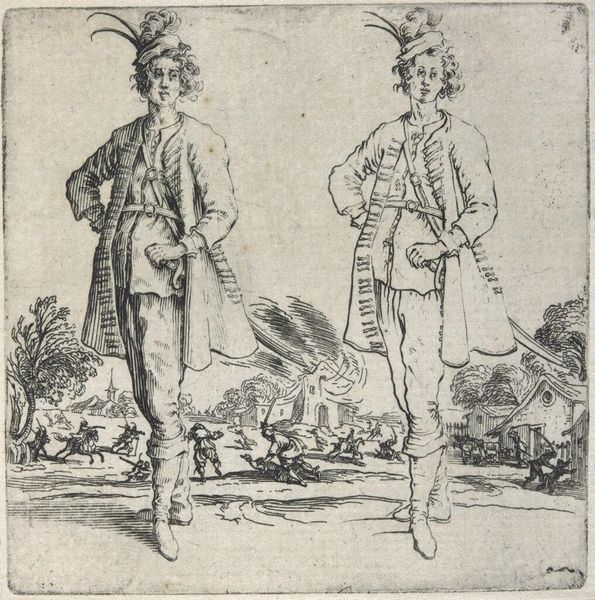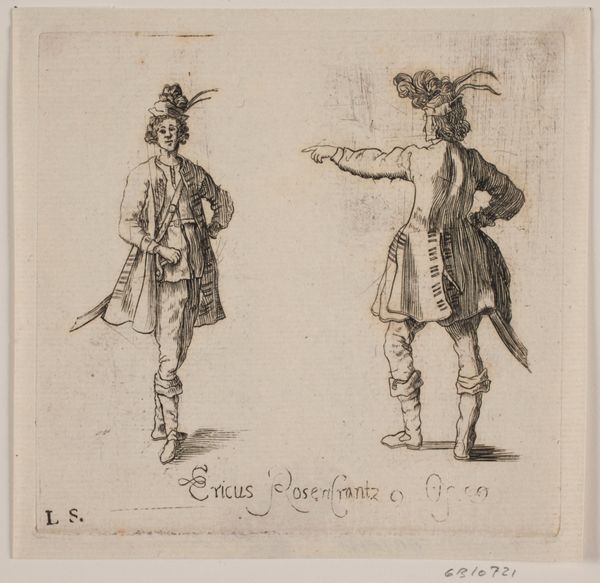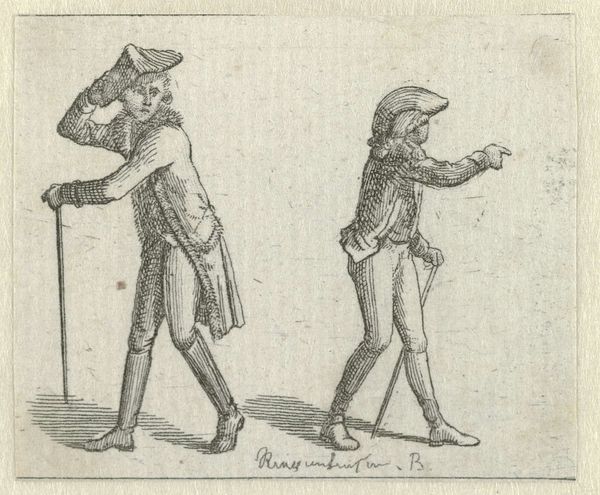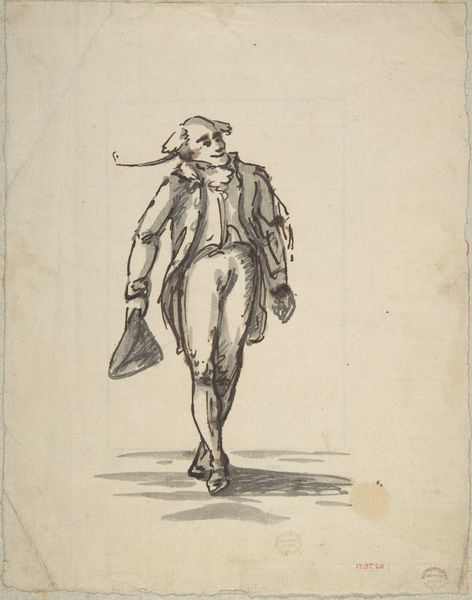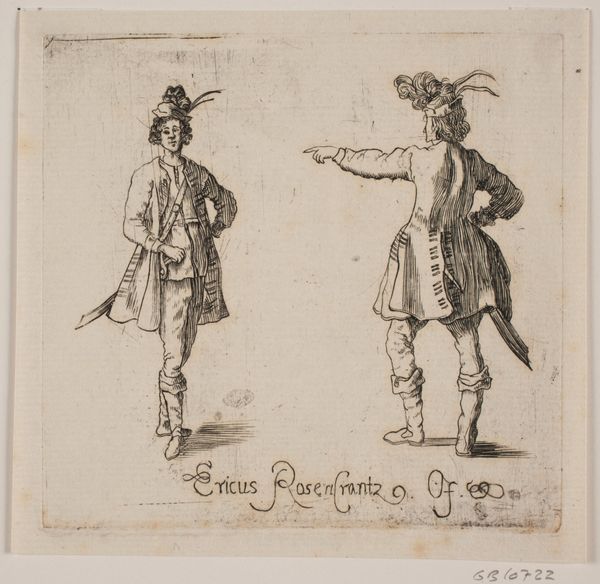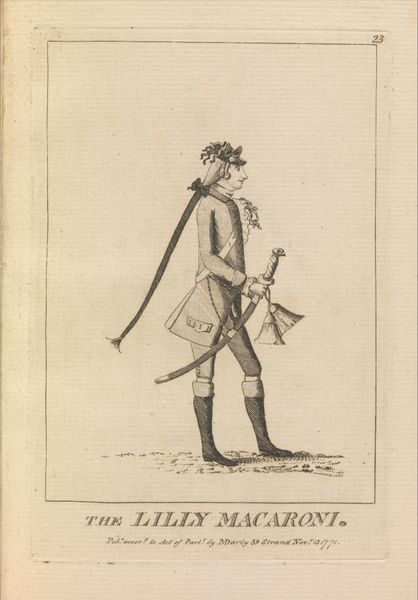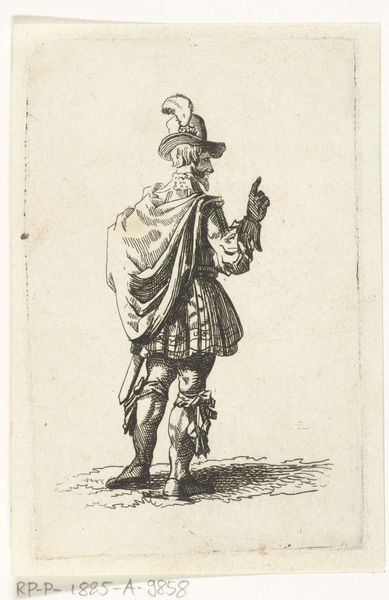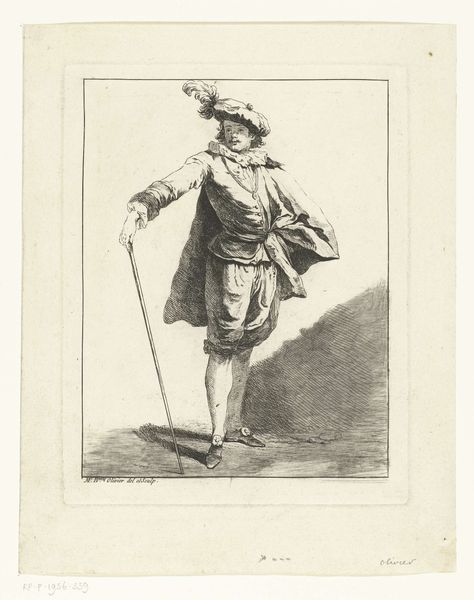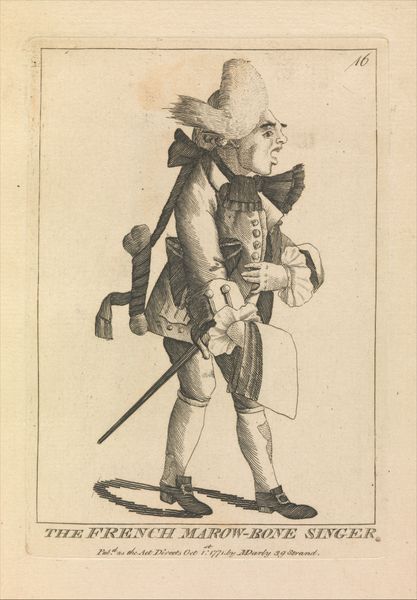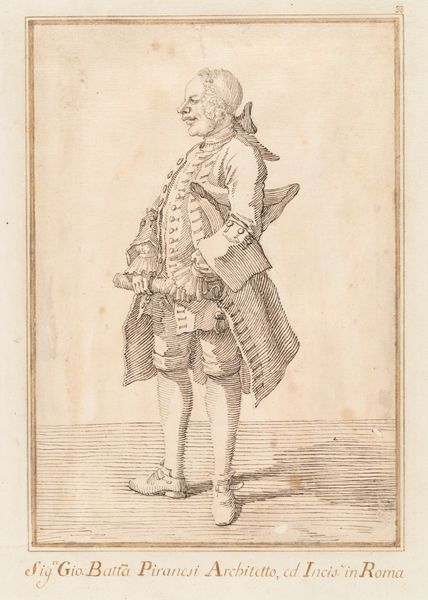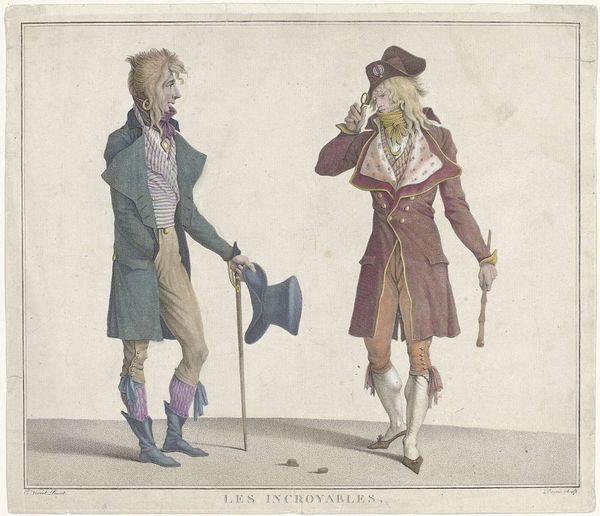
Tweemaal dezelfde soldaat met kleine gepluimde hoed en de hand in de zij, van voren gezien 1621 - 1657
0:00
0:00
drawing, paper, engraving
#
portrait
#
drawing
#
baroque
#
figuration
#
paper
#
line
#
engraving
Dimensions: height 85 mm, width 85 mm
Copyright: Rijks Museum: Open Domain
Curator: Here we have "Tweemaal dezelfde soldaat met kleine gepluimde hoed en de hand in de zij, van voren gezien" or "Two times the same soldier with a small plumed hat, hands on his side, seen from the front." This engraving, dating roughly from 1621 to 1657, is by François Collignon. The Rijksmuseum houses it. It’s striking, isn't it? Editor: My first thought is confidence. The soldier's stance is replicated side by side in these meticulous lines, exuding a sense of pride or perhaps even defiance. The Baroque detailing in the clothing makes quite an impression. Curator: The duplication immediately raises questions about identity and representation. Is Collignon commenting on the role of the individual within the military, perhaps hinting at the interchangeability of soldiers? We must consider the societal function of military might in this historical and social framework. Editor: Symbolically, I am curious about the plumes, the way the hat sits askew. Plumes were a popular, decorative status symbol through centuries in diverse cultures: were these Collignon’s personal touch? Perhaps Collignon is offering insight to Baroque fashions as visual culture here? Curator: And does that adornment point to broader issues of masculinity and performativity? Collignon provides space for discussion about how one occupies and presents a particular body, and within the historical narratives of military power, this has implications for our contemporary dialogues around the very nature of representation. Editor: Absolutely. The sword and the carefully rendered boots, are emblems. But it seems his confidence or swagger becomes the most memorable part of this cultural memory through his emblems: those symbols endure beyond the individual portrayal here. It allows us, even centuries later, insight on the role of soldier within social-cultural expectation. Curator: By placing this image of militarism into conversations about broader representation, maybe we can begin to destabilize historical hegemonies to imagine newer configurations. Editor: I agree completely: and through his details, he is also communicating how the ephemeral nature of culture and confidence can extend across generations in powerful form.
Comments
No comments
Be the first to comment and join the conversation on the ultimate creative platform.
